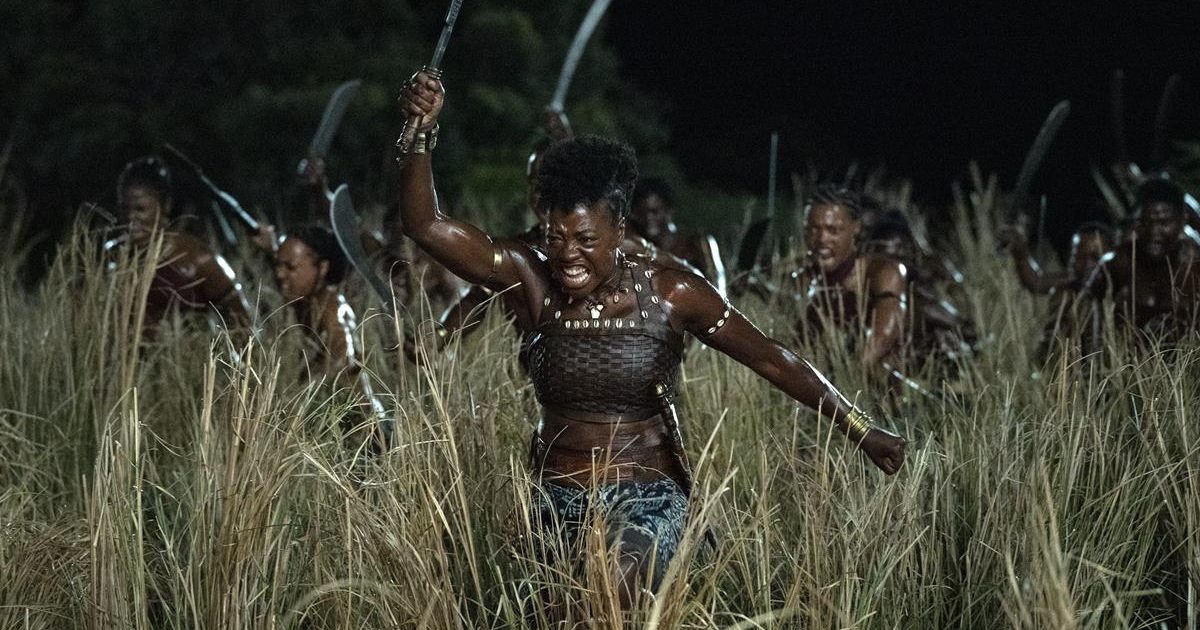
Any new film by Gina Prince-Bythewood (Love & Basketball, The Secret Life of Bees, The Old Guard) will be greeted by excitement. The Woman King, which opened in the number-one spot, taking in $19 million in its first weekend, is obviously continuing a trend but represents a significant departure for the director.
The historical epic is set in the 1800s and focuses on the Agojie, an elite all-female warrior unit charged with protecting the African Kingdom of Dahomey from the 17th to the 19th century. The powerful depiction of the life and prowess of the Agojie warriors is matched by bravura performances of the nearly all Black and female cast, led by Viola Davis.
“As soon as I read the script [credited to Dana Stevens from a story by Stevens and Maria Bello], I knew in five pages that I had to do this movie,” Prince-Bythewood tells Farah Fleurima in The New York Times. It was just excitement, excitement, excitement, because the story was entrenched in truth and a specific war that happened at a specific time, then led to a bigger war against colonizers. The more I learned about them, the more I got excited about putting this incredible culture — and us — onscreen in a way that we haven’t been able to see ourselves.”
Davis, who also executive produced the project, plays General Nanisca, who is preparing a new group of young recruits and readying them for battle under the direction of King Ghezo (John Boyega).
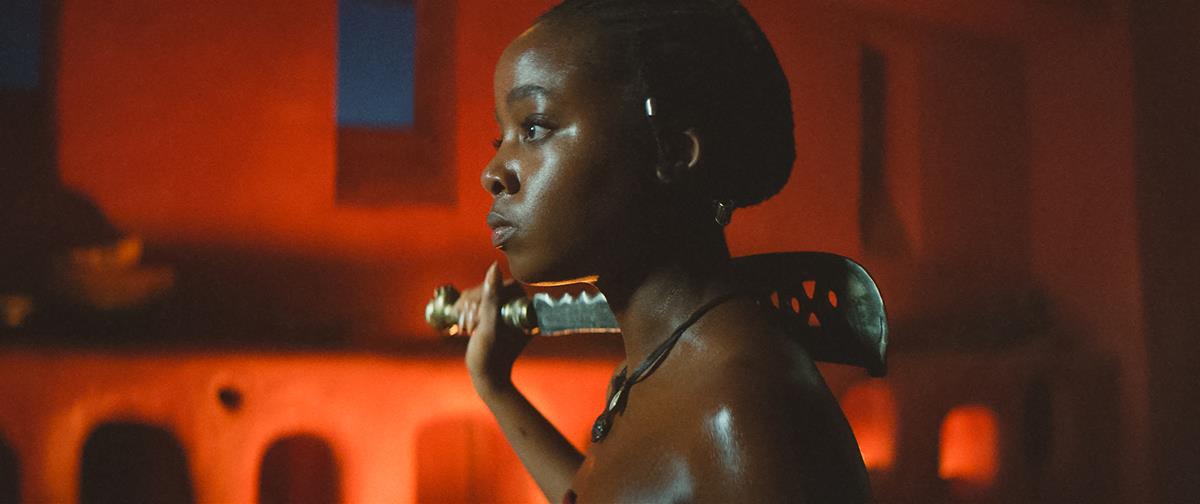
“When I met with Viola and Cathy [Schulman, a producer] to get the job, I felt all my work until [that] point led me to be able to tell this story the right way and give it the epic scale it deserved, to do the action the right way, to showcase these women in the way they deserve to be showcased, given all the things I’ve learned, not only on The Old Guard with action but just in storytelling,” the director tells Fleurima. “Do you care about the characters? Do they feel real to you? That’s where every really good movie starts.”
READ MORE: ‘The Woman King’ and Intimate Moments Amid Epic Action (The New York Times)

“The Woman King is the product of a thousand battles Davis, 57, and Prince-Bythewood, 53, have waged over the course of their careers, on subjects ranging from budgets to hairstyles,” agrees The Hollywood Reporter’s Rebecca Keegan. “Despite being the only African American actor to achieve the triple crown of acting — an Oscar (for Fences), an Emmy (for How to Get Away With Murder) and not one but two Tonys (Fences and King Hedley II) — Davis had not had the opportunity to play a physical, heroic role like this one. The Woman King is a $50 million action-adventure epic — think Braveheart with Davis in the Mel Gibson role — a movie that somehow felt both inevitable and impossible for her and Prince-Bythewood to get to the screen.
Davis herself was pulled into the movie via an unconventional pitch, says Keegan.
“In 2015, Maria Bello traveled to the West African nation of Benin, formerly the Dahomey kingdom, and learned the story of the Agojie there. Bello came home to L.A. convinced there was a film in that history. She enlisted Schulman, then head of the organization Women in Film, to help her realize it.
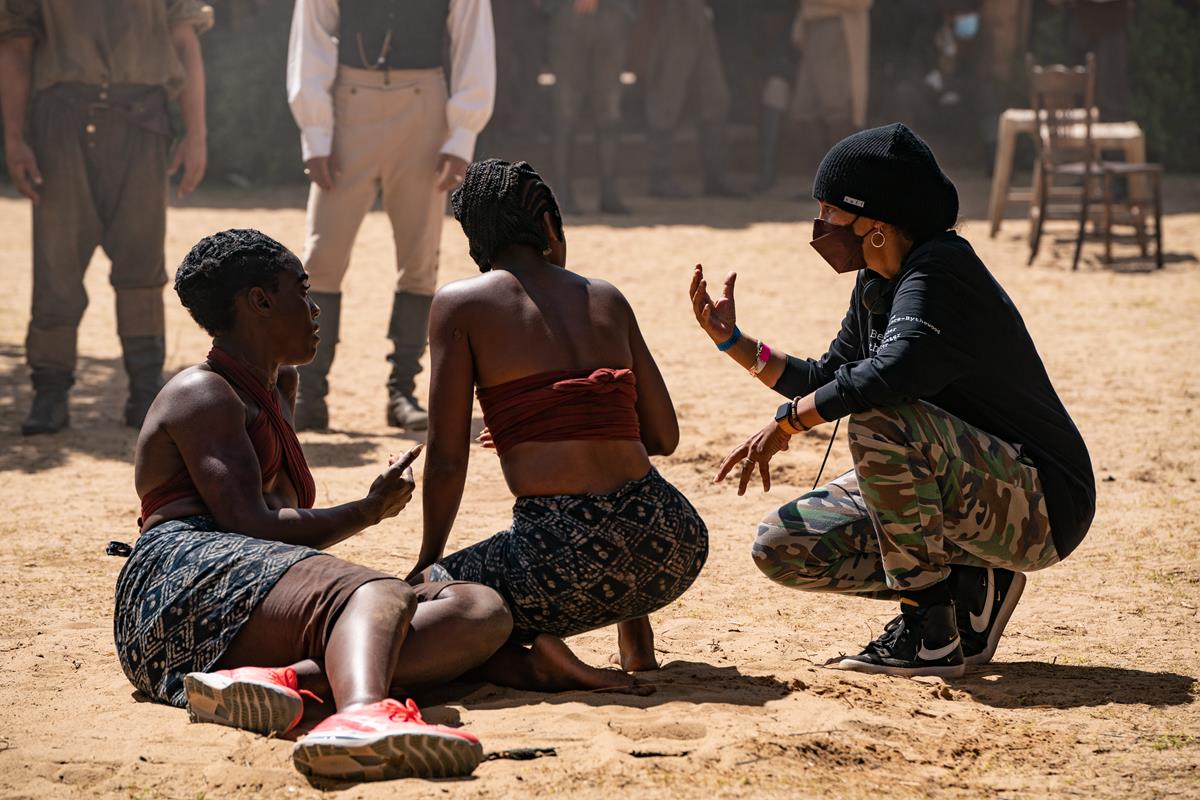
They wondered if it was possible to make an all-Black female action movie.
“This was before Marvel’s Black Panther, which fictionalizes the Agojie as the female warriors of the Dora Milaje, broke box office barriers in 2018, and before the Black Lives Matter movement sparked a new urgency in Hollywood’s sometimes halting efforts at inclusion,” Keegan continues. “In 2015, Bello used a moment when she was presenting Davis with an award at the Skirball Center in Los Angeles to tell the audience the story of the Agojie general and suggest that she’d like to see Davis play the role.”
“Instead of just presenting the award the way you normally would, she pitched the script, just this whole story,” Davis told Keegan. “And then when she finished it, everybody started cheering.” As Keegan writes, “Davis was in.”
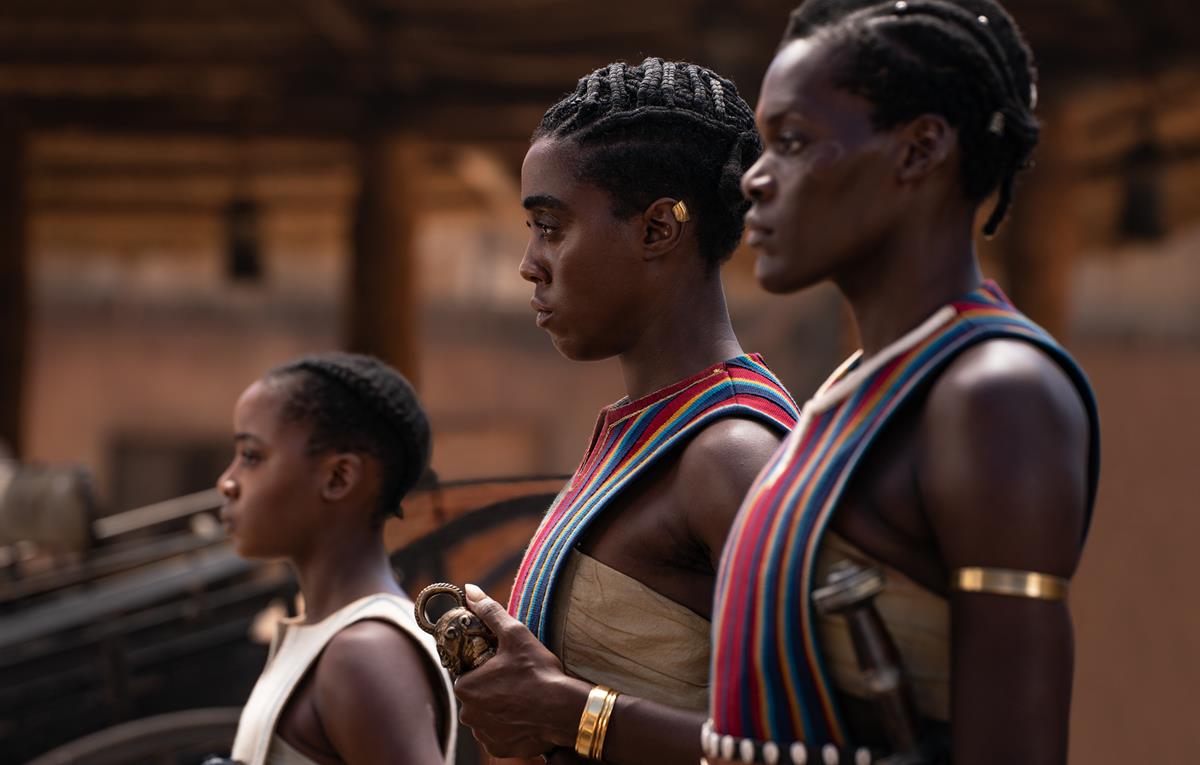
Physical preparation for the shoot was “punishing,” Keegan notes, with Prince-Bythewood joining the cast for much of it. Four months out from the shoot, cast members participated in weight training for 90 minutes a day, “followed by three-and-a-half hours of fight training with stunt coordinator Danny Hernandez, which included running, martial arts, and working with swords and spears.”
Pro boxer Claressa Shields served as a prototype of “focus, stance and strength” for Davis, who threw herself into her workouts and ultimately achieved a six-minute, 23-second mile on the treadmill during training. For Davis, the transformation was more than physical.
“I was a tough kid, I always wanted to kick somebody’s ass,” she told Keegan. “But as I grew into an adult, I embraced the narrative of the world about women. Which is, I’m feeling guilty that I don’t smile enough, I’m not soft enough, I’m not small enough, I’m too aggressive, everybody’s afraid of me. All these adjectives that I’ve been running from all my life that I feel de-feminize me. All of a sudden I had to call in all of those things that I threw into a wastebasket to create this Nanisca. And somewhere in the middle of that, it just happened: I felt badass. I felt proud, even, of my body, and not that it looked like anything that anybody else would find acceptable, but for me, it just was the house of my bravery.”
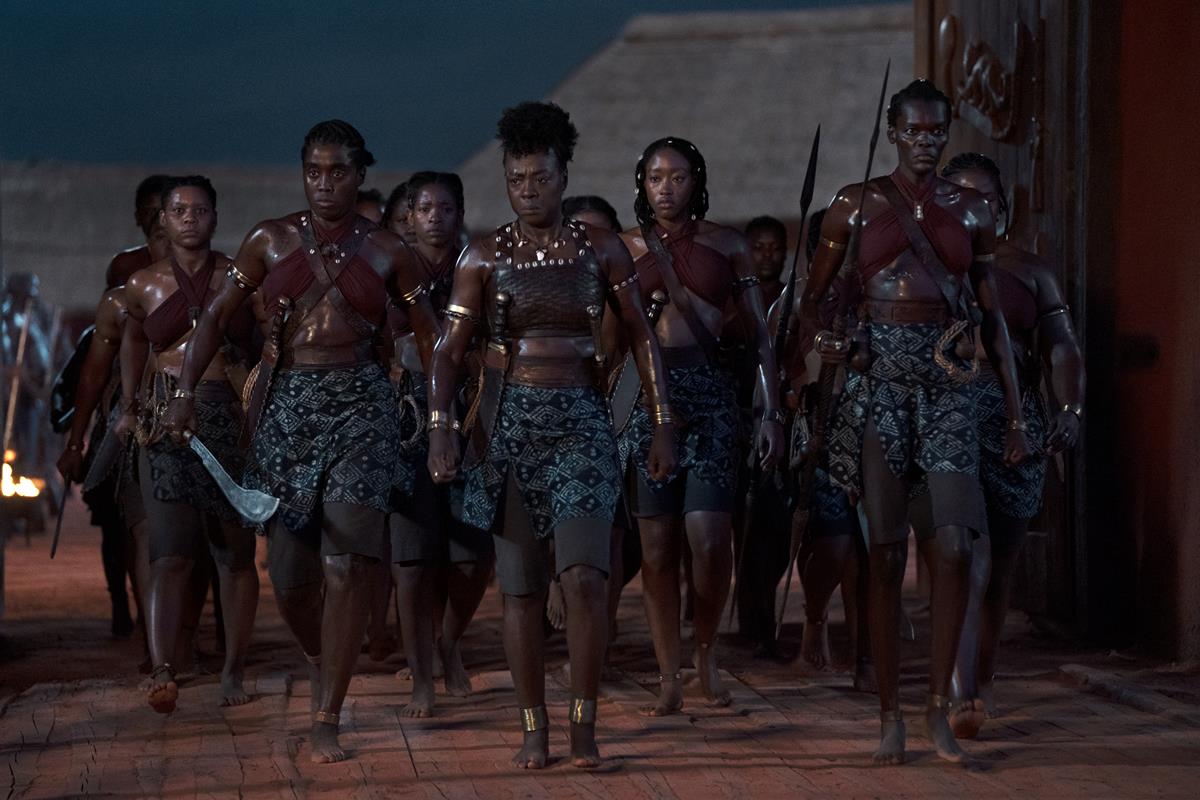
The shoot was to take place in South Africa over a period of five months, and in preparation Prince-Bythewood prioritized hiring women and people of color as department heads. The crew included cinematographer Polly Morgan, production designer Akin McKenzie, costume designer Gersha Phillips, visual effects supervisor Sara Bennett, editor Terilyn Shropshire, and South African makeup artist Babalwa Mtshiselwa.
“The thing is for women and people of color, often the résumés are not long because it’s about lack of opportunity, not lack of talent,” Prince-Bythewood said. “So when you’re in my position, it’s important to look past that résumé. There were a couple of people who’ve never done a film of this size before, but what they brought into that meeting, I knew that they were going to bring something extra.”
Prince-Bythewood wanted her cast, many of whom had been on sets where stylists didn’t know how to do their hair, to have input into their appearances. Hair stylist Louisa Anthony was tasked with creating “looks that were cool and functional in fight scenes, braids and short styles that her cast could move in.”
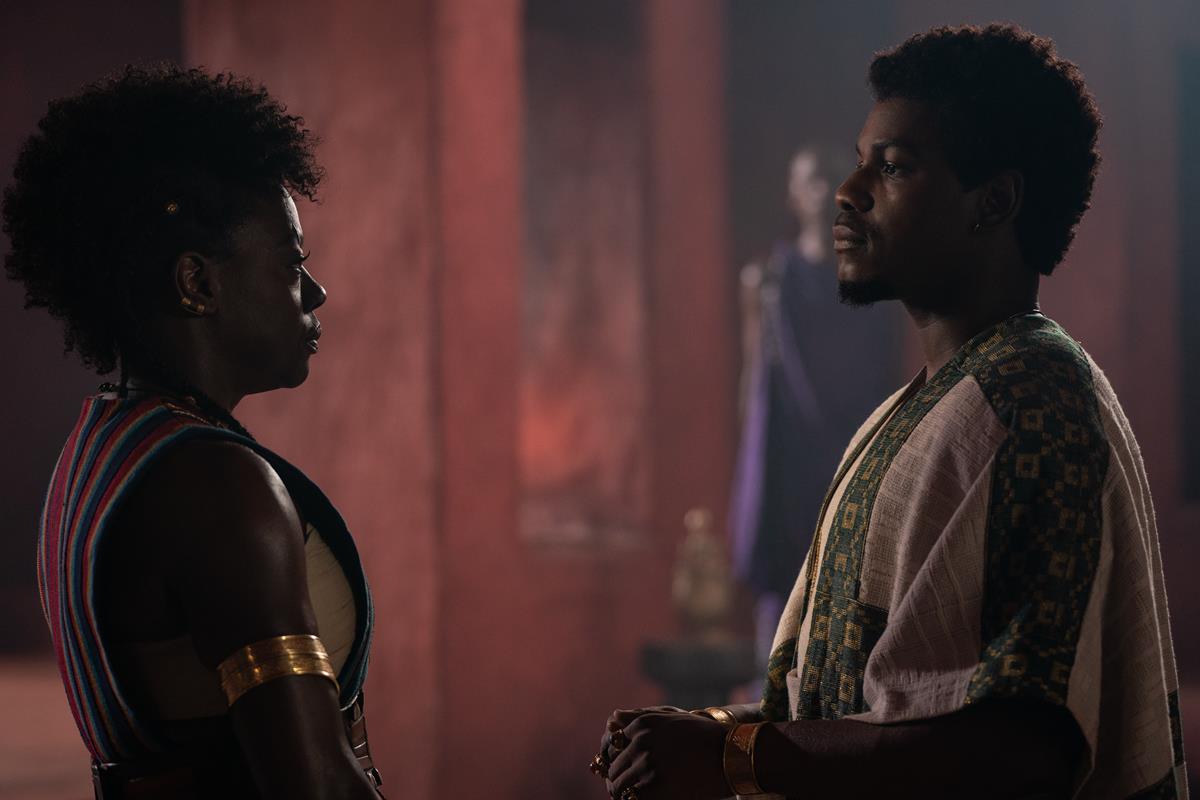
The director’s mandate to DP Morgan, she said, was “I want our women to look more beautiful than they’ve ever been shot before.”
READ MORE: Viola Davis and Gina Prince-Bythewood on the Battle to Get ‘The Woman King’ Made (The Hollywood Reporter)
“Viola, along with [producers] Julius Tennon and Cathy Schulman, fought so hard for this film, and part of it was fighting for her to have an opportunity to play a character like this, which she’s never been offered,” Prince-Bythewood tells Leslie Combemale at the Motion Picture Association’s The Credits. “Nothing has ever been written like this. She’s a genius and deserves all the choices, and the reality of our industry is that you don’t get them as a Black artist, so she created her own. It was really beautiful to build her character Nanisca with the back story that Viola created. That’s a movie in itself.”
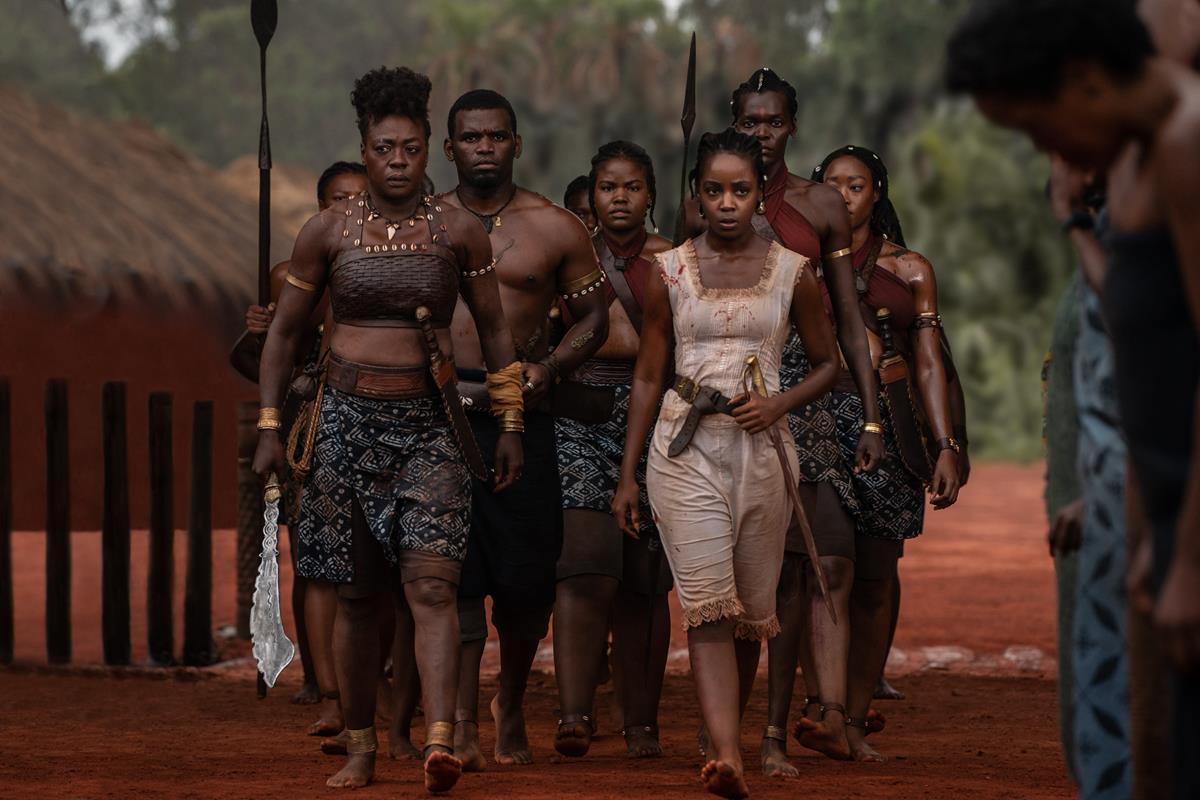
Prince-Bythewood was also inspired to work with Lashana Lynch, who plays the Agojie lieutenant Izogie in the film.
“I had seen the speech she gave at Essence Black Women in Hollywood, and that was also at the time when the trailers for No Time To Die had started coming out, and she just looked so badass,” the director tells Combemale. “It was what she said about the type of films she wanted to do and the type of work she wanted to put in the world. I was just so inspired and felt like I wanted to work with her. Then we met, and it was such an immediate connection. What we wanted to do with the character of Izogie is so specific, and I love the character on the page, but Lashana inspired me to give her more, not only in dialogue, humor, story, and backstory but also in action. She was one that Danny [Hernandez] and I, our fight and stunt coordinator, could trust implicitly. We knew if we designed it, she could do it.”
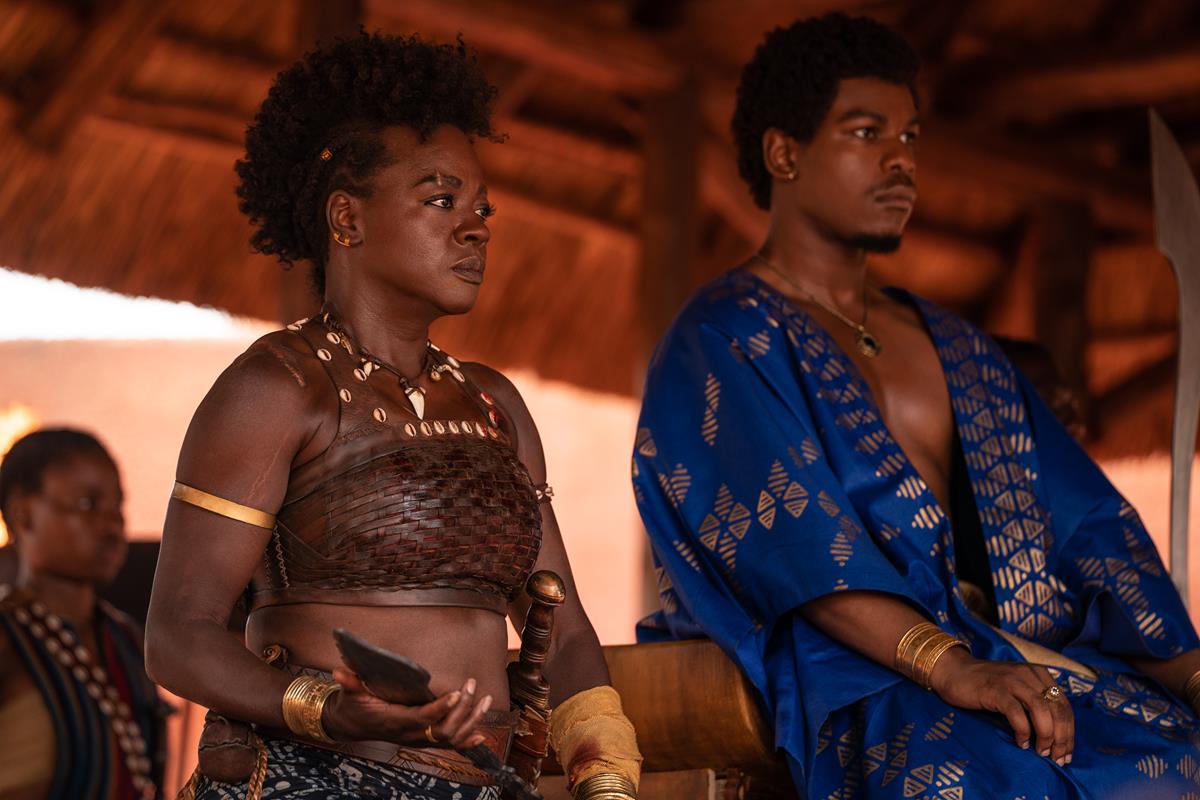
Combemale senses “joy and ownership among those involved in this movie.” Prince-Bythewood agrees: “So many of us knew what we were doing was special because it was different, and we hadn’t seen it before. When you have collaborators like I had on this, all of whom were women and people of color, all my HODs, everyone brought such a level of passion to be able to tell the story, and everybody was empowered. They had a voice in rooms where they weren’t the only ones for the first time, amongst their own, and feeling valued. That brings out even more in people, and it was such an inspiring environment. When you believe, when it’s more than a job, you just get really great work out of people.”
READ MORE: “The Woman King” Director Gina Prince-Bythewood on Her Singular, Sweeping Historical Epic (The Credits)
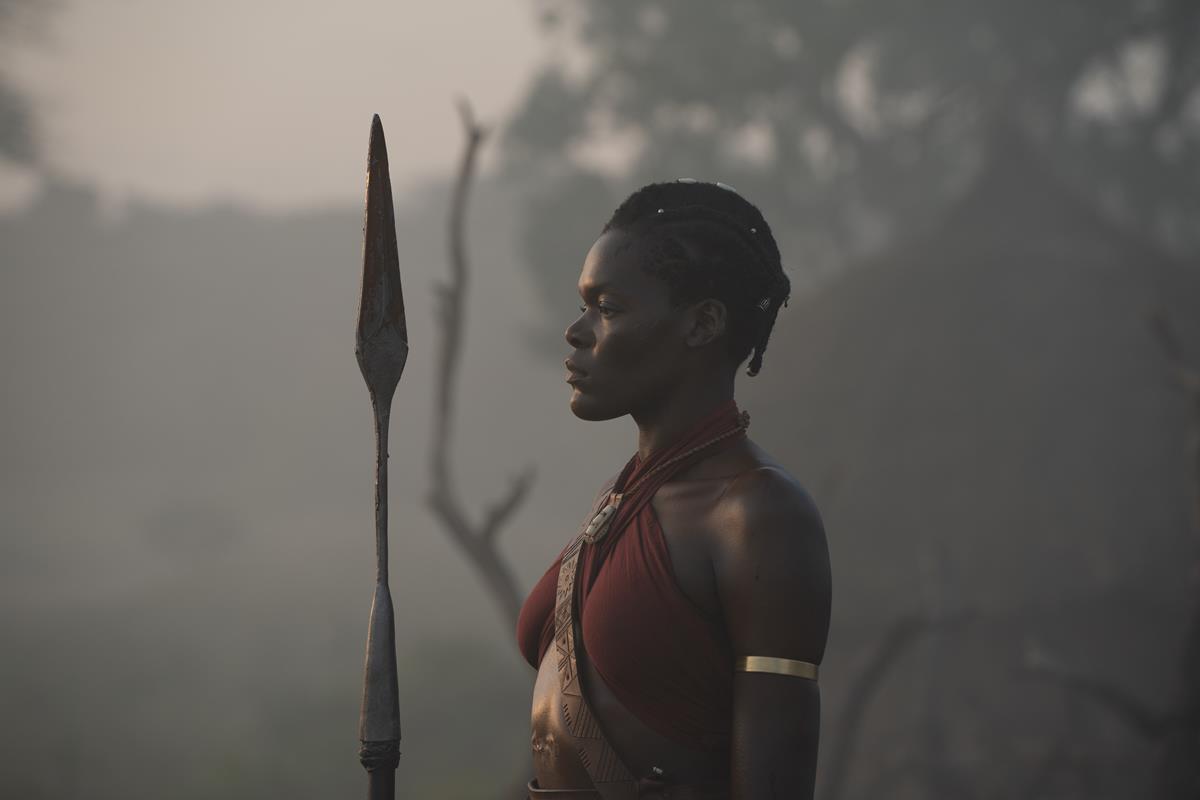
Esther Zuckerman, interviewing the director for Rolling Stone, says making the movie also brought home some personal experiences for Prince-Bythewood.
“In the script, Nanisca bonds with a new recruit named Nawi (Thuso Mbedu), whose adoptive father gives her to the Agojie after she refuses to marry,” says Zuckerman. “Prince-Bythewood was adopted, and sought out a relationship with her birth mother, only to be left feeling slightly disappointed by the experience.”
Zuckerman relays how when Prince-Bythewood reached the point of her initial pitch to the producers and Davis, who’d been developing the project, she broke down in tears when describing her relationship to the storyline. But the director admits it’s what got her the job; Zuckerman says Davis was “sold [on] Gina’s pitch” after this episode.
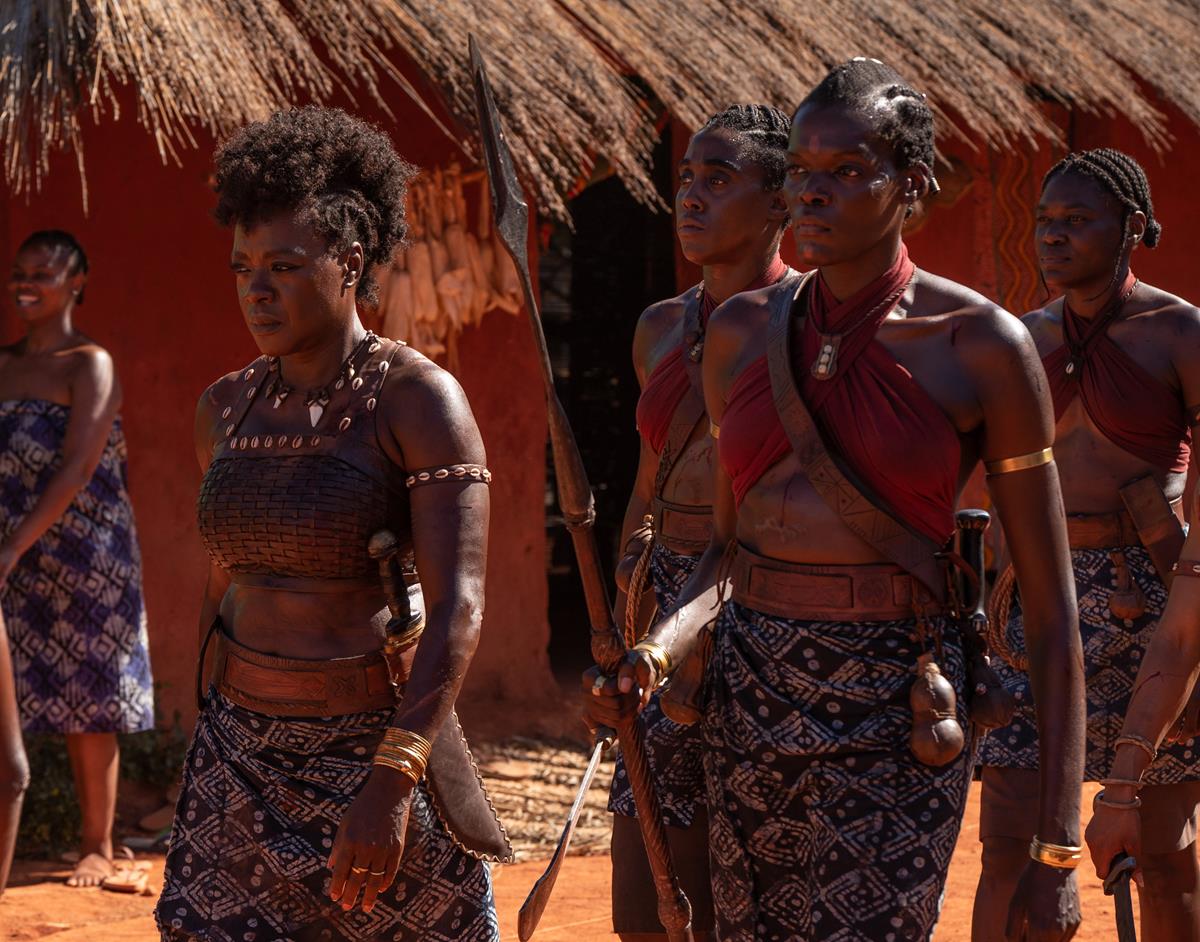
“Everyone in the room knew she was the one to direct The Woman King, because she was going to protect and honor it the same way she would her own story,” says Davis.
As a former professional athlete who had also kickboxed for a couple of years, the director was able to use her experience to overcome her imposter syndrome when coaching Davis. “I know what you feel right before a fight,” Prince-Bythewood tells Zuckerman. “I know how Nanisca would have fought. She wouldn’t have shown emotion in her face. She wouldn’t show effort. Brutally efficient. So I could talk to [Davis] about that.”
READ MORE: ‘I Know What You Feel Before a Fight’: Why Gina Prince-Bythewood Needed to Make ‘The Woman King’ (Rolling Stone)
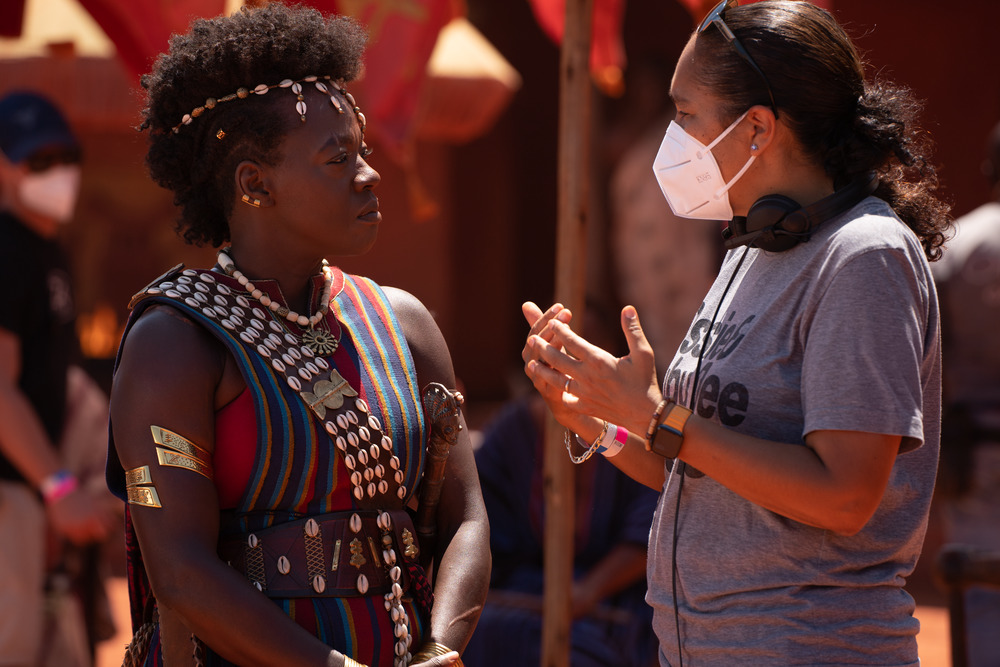
Writing at SlashFilm, Mike Schutt says The Old Guard showed Prince-Bythewood had an inherent knack for action geography. “It was a great place to build from, and boy howdy, did she build on it for The Woman King,” says Schutt. “Working on The Old Guard made her realize rehearsal was her friend.”
Extensive prep resulted in “every action sequence being rousing, brutal, and utterly thrilling,” Schutt notes.
“Every actor is in total command of their body, and you believe these are real warriors,” he adds. “Without proper rehearsal, The Woman King could look frenzied and hollow, and it couldn’t be further from those descriptors. Gina Prince-Bythewood learned how to be a great action filmmaker, and I want to see her canvases get even bigger.”
Read More: The Old Guard Taught Gina Prince-Bythewood A Vital Lesson For The Woman King (SlashFilm)

The movie isn’t just concerned with war and battles, there’s also a B-plot romance, points out Danielle Cohen for The Cut.
“I think the best love stories aren’t the main story,” the director tells Cohen. “It’s hard to sustain just two people in love. What I learned from the big, historical epics that influenced The Woman King was that it can’t just be two armies clashing and hacking at each other. What’s the story beneath that, and how do you follow it within the chaos? I knew I wanted The Woman King to be intimately epic, and I feel like all my work up to this point has led me to this. Having the level and depth of character from some of the smaller, more intimate stories I’ve told as I go into this bigger sandbox is really important. There are a number of different love stories within The Woman King that help make an audience feel and connect. I didn’t just want to show these women as badass killers. Let’s show their humanity, the fullness of their lives, the fact that their vulnerability is a strength in addition to the fact that they kill.”
READ MORE: How Gina Prince-Bythewood Made The Woman King ‘Intimately Epic’ (The Cut)
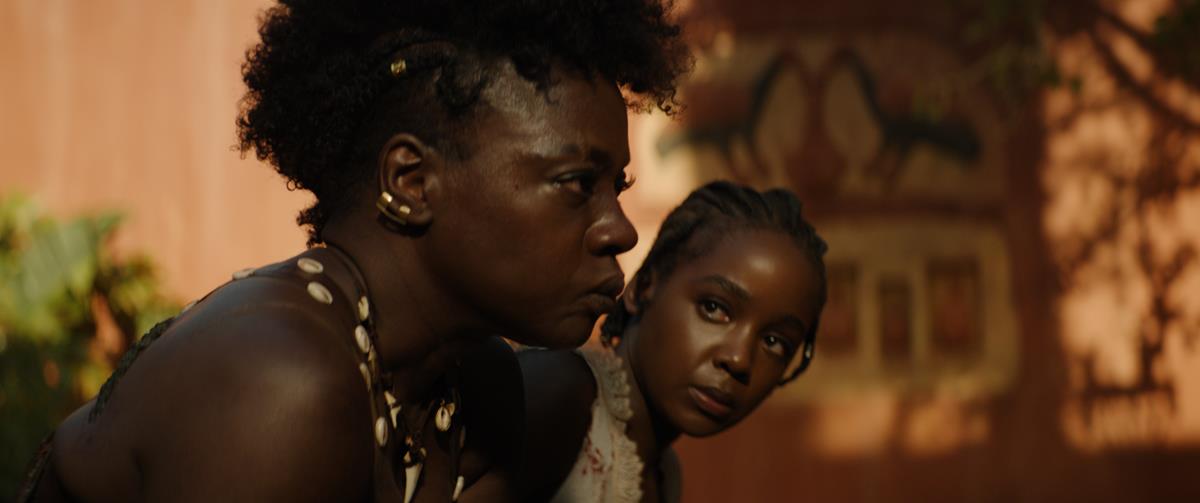
Although just released, The Women King is already engaged in its own online battles around the extent of Dahomey’s role in the slave trade.
Polygon’s Matt Patches was one of many to ask the director about the challenges inherent in approaching this subject in a historical context.
“Almost every society engaged in slavery in some respect, and the difference here, prior to Europeans coming — as in any other type of society, it was about prisoners of war,” Prince-Bythewood told Patches.
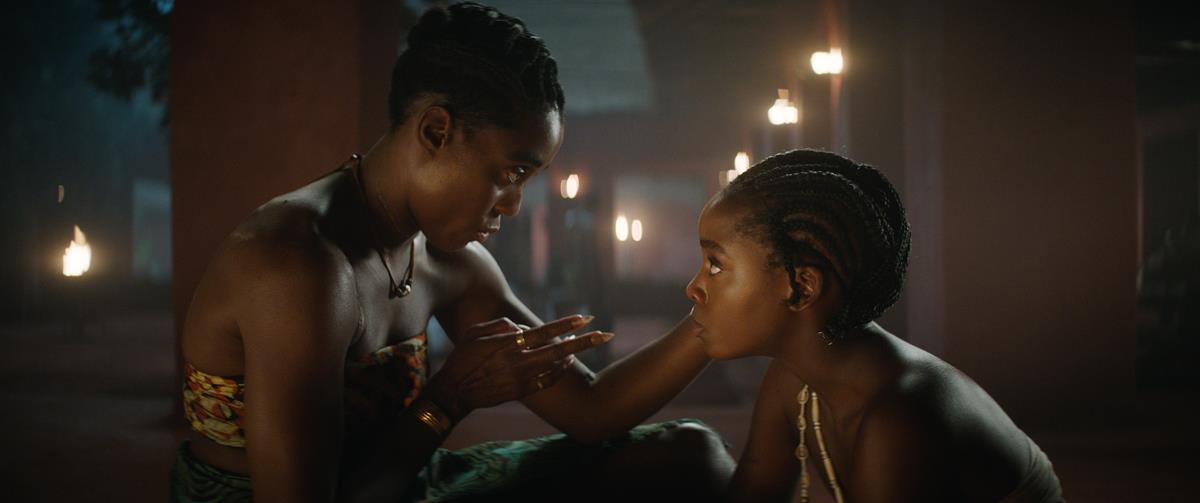
“Never commerce — that’s what Europeans brought to it. But we also set this film specifically at the time where the kingdom was at a crossroads, and Ghezo was having to decide [whether to capture other Africans and sell them to European slavers]. Because it was literally — half the kingdom wanted to abolish their involvement, and the other half wanted to keep it, because it brought them wealth. So the Agojie and Nanisca represented that group that wanted to abolish it, and Ghezo had to make that decision. In America, certainly, [Black people are] taught that our existence in America begins with enslavement. We’re not taught that we came from so far beyond that. Having that knowledge going up can absolutely be a game-changer. So I’m hoping, foremost, you go and you’re entertained, and you have fun with the film, but you get to see yourself reflected in a way you never have, and change your mindset.”
READ MORE: The Woman King director Gina Prince-Bythewood on true stories, brutal fights, and what matters when making a historical epic (Polygon)
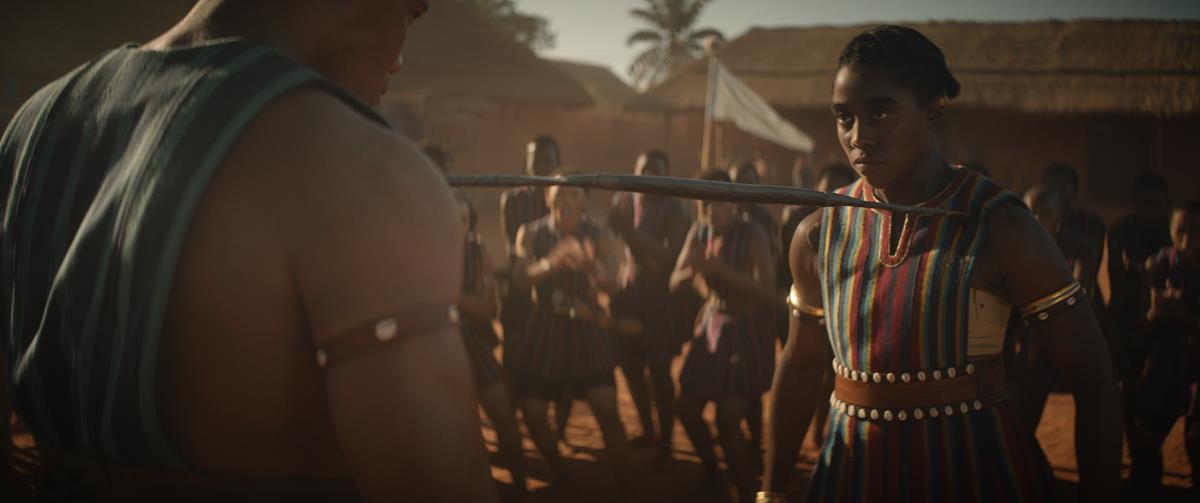
Noel King on Vox’s Today, Explained podcast also approached the subject of truth, and of wrestling with the historical complexity.
“Historical epics are some of my favorite films,” Prince-Bythewood told King. “I’ve watched Braveheart a hundred times. I loved that film. Last of the Mohicans. Gladiator. These films that are set in a true time in history, and yet there is some inventiveness in terms of the characters and your ability to tell personal stories within that. So I knew going in the balance that I wanted to have, and the confidence in that and the excitement and being able to tell the story of this kingdom, like that’s an extra thing to know that these women were real, that this David and Goliath battle that they had was real, and the stakes were real, and the reasons for it were real, that this kingdom was real, that the politics and gender politics were real. I just kept getting more excited as I got deeper into the research because I saw more truth and more authenticity that I could pour into the story.”

